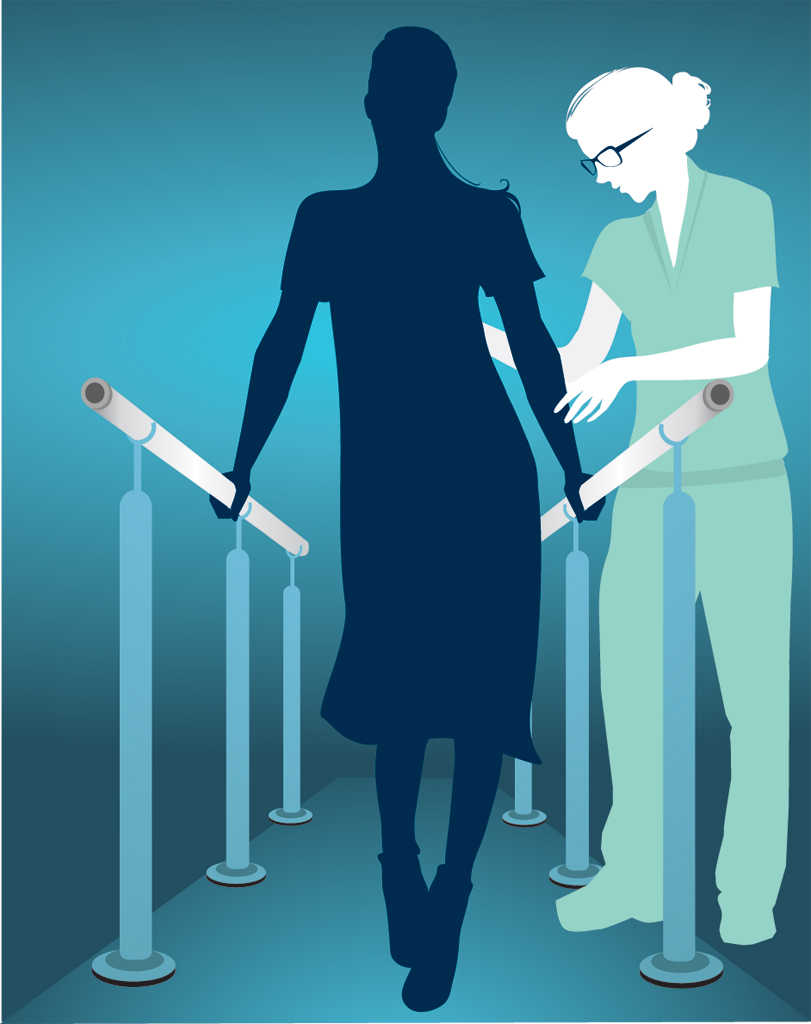By Sangita Verma, PT, DPT, MBA, GCS
According to the National Osteoporosis Foundation, 1 in 2 women and up to 1 in 4 men over age 50 will break a bone because of osteoporosis.
Often, that will be the first time they learn that they have the disease.
Commonly referred to as a silent disease because it has no symptoms, osteoporosis is a chronic condition characterized by the loss of bone mass and bone mineral density, which causes bones to become weak, brittle and break.
While there is no cure for osteoporosis, the condition can often be managed with a comprehensive treatment plan that typically includes medication as well as physical therapy.
At Princeton Rehabilitation, a program of Penn Medicine Princeton Medical Center (PMC), specially trained physical therapists offer osteoporosis patients individualized care to help treat osteoporosis and reduce the risk of fracture.
A Common Condition
Normally, your body is breaking down and rebuilding new bone constantly.
When you are young, the rebuilding process happens faster than the breaking down, leading to increased bone mass. As you age, however, the process slows and ultimately your body starts to lose more bone mass than it rebuilds.
In some people, this gradual loss can lead to osteoporosis — or porous bones — a common disease that decreases bone strength and increases the risk for broken bones.
An estimated 10 million Americans have osteoporosis and another 44 million have low bone density, which puts them at risk for the disease, according to the National Osteoporosis Foundation.
Osteoporosis affects women and men of all races and ethnic groups. However, women are at greater risk for the disease and its complications. In fact, the National Osteoporosis Foundation notes that a woman’s risk of fracture is equal to her combined risk of breast, uterine and ovarian cancer.
Causes of osteoporosis include:
• Post-menopausal state (and possibly low testosterone in men).
• Being confined to a bed (or prolonged immobility).
• Rheumatoid arthritis, chronic kidney disease and eating disorders.
• Taking corticosteroid medications (such as prednisone or methylprednisolone) every day for more than 3 months, or taking some anti-seizure medications.
• Hyperparathyroidism.
Silent Disease
There are typically no symptoms of osteoporosis in the early stages of the disease. In many cases, in fact, osteoporosis goes undetected until a fracture occurs.
Symptoms that occur late in the disease include:
• Fractures that happen with little or no trauma, such as after bumping a piece of furniture or just turning the body in a certain way.
• Loss of height (as much as six inches) over time.
• Low back pain due to fractures of the vertebrae.
• Neck pain due to fractures of the vertebrae.
• Stooped posture or kyphosis, also called a dowager’s hump.
Osteoporosis-related fractures most commonly occur in the hip, wrist or spine. Hip fractures are especially concerning as 24% of hip fracture patients age 50 and over die in the year following the fracture, according to the National Osteoporosis Foundation.
Exercise, Physical Therapy Can Help
Exercise, particularly strength training and weight bearing activities, plays an important role in osteoporosis treatment. As the National Institutes of Health notes, regular exercise can help older adults:
• Build muscle mass and strength to improve coordination and balance, which can lower the chance of falling and consequently breaking a bone.
• Improve daily function and delay loss of independence.
However, exercise should not put any sudden or excessive strain on your bones. That is why it is important to work with a physical therapist to develop a safe and effective exercise plan.
At Princeton Rehabilitation, physical therapy for osteoporosis starts with a thorough physical assessment along with education about the disease.
In addition, physical therapy includes:
• Specific exercises to target at-risk areas of your body, such as your spine and hips.
• Instruction about good body mechanics to avoid injury. For instance, evidence shows that many osteoporosis-related injuries occur during routine activities of daily living such as getting out of the car or putting groceries away. Understanding and practicing good body mechanics can help prevent injuries.
• Exercises and activities to improve posture and balance, which will in turn help relieve pain, keep muscles strong, support bone health, and reduce the risk of falling.
• Various modalities to help relieve pain.
• Recommendations for appropriate braces for support.
• Instruction about proper breathing techniques to strengthen the diaphragm and stabilize the back.
• Relaxation techniques to help ease the anxiety, fear, and depression that are often associated with a diagnosis of osteoporosis.
• An in-home fall risk assessment, if necessary.
If you have been diagnosed with osteoporosis or are concerned about your risk for the disease, talk with your doctor about the benefits of physical therapy. By working with a physical therapist, you can learn how to live with and manage the disease.
Physical therapy is one of several services offered as part of the Osteoporosis Program at PMC. The program was designed to increase awareness and provide education on the importance of early diagnosis and treatment of osteoporosis.
For more information or to find a physical therapist with Princeton Rehabilitation, call 609-853-7840 or visit www.princetonhcs.org.
Sangita Verma, PT, DPT, MBA, GCS, holds a doctorate degree in physical therapy, is a geriatric certified specialist, and is the director of rehabilitation for Princeton Rehabilitation.

